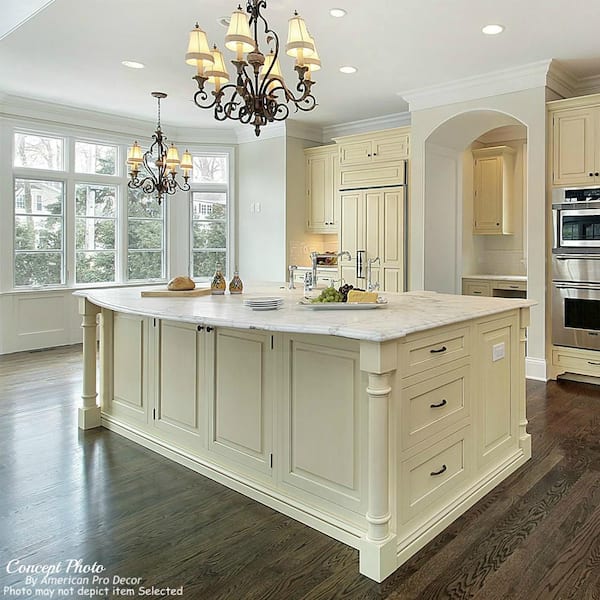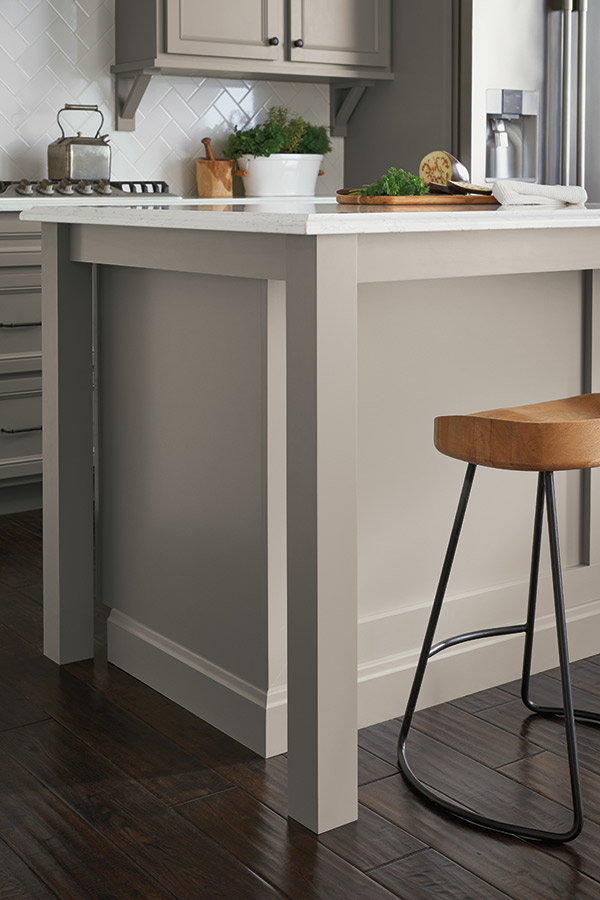Develop a Magnificent Focal Point with Classy Legs For Kitchen Island
Develop a Magnificent Focal Point with Classy Legs For Kitchen Island
Blog Article
Important Factors to Take Into Consideration When Choosing Legs For Cooking Area Island
Selecting the appropriate legs for a kitchen area island involves a careful evaluation of multiple aspects that can substantially influence both performance and visual appeal. Amongst these, the selection of product plays a critical function in making certain resilience, while the style has to complement the existing style. Considerations such as elevation and weight support are vital for security and comfort. As we discover these elements, it becomes clear that each decision can have significant implications for the overall cooking area experience. What subtleties should be considered in each of these groups to attain the optimal balance?
Product Options
When choosing legs for a kitchen area island, understanding the different material alternatives is vital for achieving both visual charm and architectural stability (Legs For Kitchen Island). The selection of product dramatically influences not just the resilience of the island but also its general design and performance
Metal legs, usually made from stainless steel or wrought iron, add a modern and industrial feeling while ensuring longevity and stability. These materials are resistant to use and can support significant weight, making them ideal for bigger islands.
An additional option is engineered materials, like MDF or plywood, which can be much more cost-effective while still providing a range of coatings. They may not give the very same degree of security as strong timber or metal. Legs For Kitchen Island. Products such as acrylic or glass can develop a contemporary look, though they might require extra support to ensure stability.
Eventually, the choice of product for kitchen island legs need to line up with the preferred functionality and the overall theme of the cooking area.
Design And Style

When thinking about style, the form and surface of the legs are crucial. Tapered legs can supply a feeling of agility and elegance, while thicker, a lot more robust legs can convey strength and stability. Additionally, the surface-- be it painted, stained, or natural-- should match the cabinets and kitchen counter materials to create a unified appearance.
Additionally, the layout of the legs can likewise show individual preference. Customized or attractive legs, such as those including elaborate carvings or one-of-a-kind geometric shapes, can function as focal points, adding personality and character to the kitchen. Ultimately, the right option will not just enhance functionality yet likewise raise the visual appeal, making the cooking area island a standout function of the home.
Elevation Considerations
Selecting the ideal height for kitchen area island legs is essential, as it straight impacts both capability and convenience. The standard height for a kitchen area island usually varies from 36 to 42 inches, straightening with common countertop heights. A 36-inch height is ideal for cooking and cooking, permitting comfy use cooking area appliances and tools. Alternatively, a height of 42 inches is frequently chosen for islands meant for bar seats, accommodating taller feceses and offering an informal dining experience.

It is additionally important to make up individuals' heights and preferences. Personalizing the elevation can guarantee a comfy experience for all relative, making the cooking area island a much more delightful and practical space.
Weight Assistance
Making sure appropriate weight support for kitchen island legs is important for both safety and security and functionality. The kitchen area island usually serves several purposes, consisting of food preparation, dining, and extra storage space, requiring a robust assistance framework. When selecting legs, it is important to think about the total weight capability needed based upon the island's planned usage and the materials that will certainly be put on it.
The option of product for the legs plays a substantial function in their weight-bearing capacities. Solid timber, steel, and sturdy compounds normally provide remarkable strength contrasted to lighter materials. Furthermore, the layout of the legs-- whether they are straight, tapered, or have a pedestal kind-- can affect their capability to distribute weight effectively across the framework.
Always get in touch with the maker's specifications concerning tons limits to ensure that hop over to these guys the legs can maintain the intended weight without compromising security. In summary, choosing kitchen island legs with ample weight support is crucial for producing a safe and useful cooking space.
Installation and Upkeep
Appropriate installation and maintenance of kitchen area island legs are essential for guaranteeing durability and stability. To begin, it is vital to follow the maker's guidelines during setup. This frequently involves safeguarding the legs to the island base using proper bolts, ensuring that the legs are level and lined up. Utilizing a level device can help prevent tottering and enhance the general visual allure of the cooking area island.
As soon as mounted, regular upkeep is required to preserve the honesty and look of the legs - Legs For Kitchen Island. For wooden legs, periodic cleaning with a damp fabric and application of appropriate timber polish can protect against wetness damage and maintain their finish. Metal legs might call for a gentle cleansing solution to eliminate grease and crud, complied with by a completely dry towel to avoid rust development
In addition, examine the legs routinely for indicators of wear or damage, such as cracks or loose joints. Tightening screws or bolts as required can additionally extend the life-span of the legs. By adhering to these installation and maintenance methods, homeowners can guarantee that their cooking area island remains durable and visually appealing for years to find.
Final Thought

Aesthetic coherence is critical in selecting the style and style of legs for a cooking area island, as these aspects substantially influence the general setting of the room. Tapered legs can give a feeling of lightness and sophistication, while thicker, a lot more robust legs can share toughness and security.Selecting the proper elevation for cooking area island legs is essential, he said as it directly affects both functionality and convenience. In summary, choosing kitchen island legs with adequate weight support is important for producing a safe and functional culinary space.
In final thought, choosing legs for a cooking area island necessitates careful consideration of different elements, consisting of product alternatives, style, height, weight assistance, and installment.
Report this page